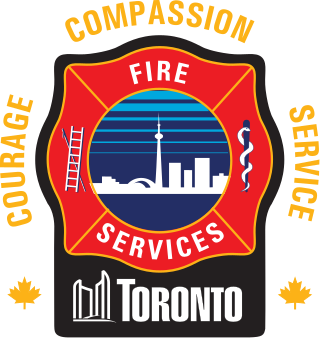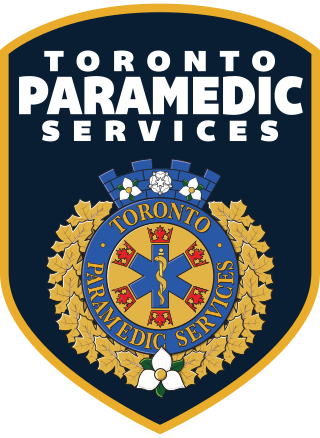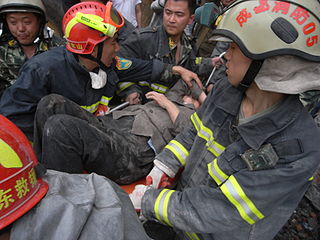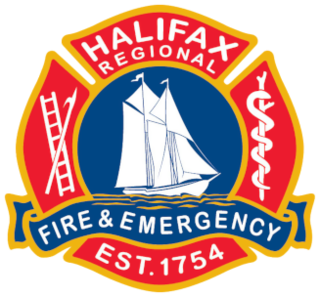Related Research Articles

Search and rescue (SAR) is the search for and provision of aid to people who are in distress or imminent danger. The general field of search and rescue includes many specialty sub-fields, typically determined by the type of terrain the search is conducted over. These include mountain rescue; ground search and rescue, including the use of search and rescue dogs ; urban search and rescue in cities; combat search and rescue on the battlefield and air-sea rescue over water.
Public Safety Canada, legally incorporated as the Department of Public Safety and Emergency Preparedness (PSEPC), is the department of the Government of Canada responsible for (most) matters of public safety, emergency management, national security, and emergency preparedness in Canada.

Canada Command was one of the four operational commands of the Canadian Forces from 2006 to 2012. It was responsible for routine domestic and continental operations, such as search and rescue, sovereignty patrol, national security coordination and contingency planning. As an operational formation, Canada Command used resources generated from the three environmental commands of the Canadian Forces: the Royal Canadian Navy, the Canadian Army and the Royal Canadian Air Force. The command was merged into the Canadian Joint Operations Command in October 2012.

Toronto Fire Services (TFS), commonly called Toronto Fire, provides fire protection, technical rescue services, hazardous materials response, and first responder emergency medical assistance in Toronto, Ontario, Canada. Toronto Fire Services is currently the largest municipal fire department in Canada.

The City of Toronto Paramedic Services is the statutory emergency medical services provider in Toronto, Ontario, Canada. The service is operated as a division of the City of Toronto, under the Community & Social Services cluster. The service is funded by the municipal tax base, and operates similarly to other municipal divisions, such as the Toronto Parks, Forestry & Recreation division, or the Toronto Water division, but retains operational independence from other divisions. While under municipal government control, it is subject to provincial legislation and licensing. It is not the only service provider in its area; private-for-profit medical transport services also provide routine, non-emergency transports and coverage for special events, but the statutory emergency medical system is the only provider permitted to service emergency calls.

Mississauga Fire and Emergency Services (MFES) provides fire protection, technical rescue services, hazardous materials response, and first responder emergency medical assistance to the city of Mississauga, Ontario, Canada.

Canada was one of the countries to provide the most aid and relief for Hurricane Katrina. They provided ships, supplies, volunteers, search-and-rescue teams, and more. It has also accepted some evacuees to stay in Canada.

Urban search and rescue is a type of technical rescue operation that involves the location, extrication, and initial medical stabilization of victims trapped in an urban area, namely structural collapse due to natural disasters, war, terrorism or accidents, mines and collapsed trenches.
An emergency service unit (ESU), alternatively emergency service detail (ESD) or emergency service squad (ESS), is a type of unit within an emergency service, usually police, that is capable of responding to and handling a broader or more specific range of emergencies and calls for service than regular units within their organization, such as rescue, emergency management, and mass casualty incidents. They are similar to police tactical units, fire department technical rescue, and incident response teams in other emergency services and organizations, and often have similar or overlapping roles; the term is also used synonymously for these units, or as a catch-all for units that combine multiple disciplines and roles under one banner.
The Royal Canadian Numismatic Association was founded in 1950. It is a nonprofit association for coin collectors and other people interested in Canadian numismatics. It has members throughout Canada and in other countries. At times, it also works with the Canadian Association for Numismatic Education (CAFNE), an arms length organization, which is defined by the CRA as a Canadian educational and charitable organization. CAFNE provides funding for some of the RCNA's educational seminars and publications.

The Shock Trauma Air Rescue Service is a Canadian non-profit helicopter air ambulance organization funded by individual donors, service groups, corporate donors and government contributions. STARS provides rapid and specialized emergency care and transportation for critically ill and injured patients. STARS operates from bases in Calgary, Edmonton, Grande Prairie, Regina, Saskatoon, Winnipeg and formerly Halifax.

The Clark County Fire Department (CCFD) provides fire protection and emergency medical services for the unincorporated areas of Clark County, Nevada, United States. The cities of Las Vegas, Boulder City, North Las Vegas, Henderson and Mesquite each have their own fire department, but emergency management is provided by the county government.

A FEMA Urban Search and Rescue Task Force is a team of individuals specializing in urban search and rescue, disaster recovery, and emergency triage and medicine. The teams are deployed to emergency and disaster sites within six hours of notification. The Federal Emergency Management Agency (FEMA) created the Task Force concept to provide support for large scale disasters in the United States. FEMA provides financial, technical and training support for the Task Forces as well as creating and verifying the standards of Task Force personnel and equipment.

Vancouver Fire and Rescue Services (VFRS) was founded in 1886 and today serves the city of Vancouver, British Columbia, providing fire, medical first response, rescue and extrication services. In 2017, VFRS responded to 67,000 emergency calls.

The Fairfax County Fire and Rescue Department is a combination career and volunteer organization that provides fire suppression services, emergency medical response services, technical rescue services, hazardous materials Response services, water rescue services, life safety education, fire prevention and arson investigation services to Fairfax County, Virginia. Emergency medical services include advanced life support response by ALS capable engines and transport units.
Urban Search and Rescue California Task Force 3 or CA-TF3 is a FEMA Urban Search and Rescue Task Force based in Menlo Park, California. CA-TF3 is sponsored by the Menlo Park Fire District.

Halifax Regional Fire and Emergency Services provides fire protection, rescue and first responder assistance throughout Halifax, Nova Scotia, Canada.
Winnipeg Fire Paramedic Service (WFPS) provides fire and EMS services to the City of Winnipeg, Manitoba. It operates from 27 fire stations, and 3 administration offices across the city.
The history of flooding in Canada includes floods caused by snowmelt runoff or freshet flooding, storm-rainfall and "flash flooding", ice jams during ice formation and spring break-up, natural dams, coastal flooding on ocean or lake coasts from storm surges, hurricanes and tsunamis. Urban flooding can be caused by stormwater runoff, riverine flooding and structural failure when engineered flood management structures, including dams and levees, prove inadequate to manage the quantities and force of flood waters. Floods can also occur when groundwater levels rise entering buildings cracks in foundation, floors and basements. Flooding is part of the natural environmental process. Flooding along large river systems is more frequent in spring where peak flows are often governed by runoff volume due to rainfall and snowmelt, but can take place in summer with flash floods in urban systems that respond to short-duration, heavy rainfall. Flooding due to hurricanes, or downgraded severe storms, is a concern from August to October when tropical storms can affect Eastern North America. Flood events have had a significant effect on various regions of the country. Flooding is the costliest natural disaster for Canadians. Most home insurance claims in Canada deal with water damage due to sewer back-up, not fire.
References
- ↑ "HUSAR". Archived from the original on 2007-09-30. Retrieved 2007-02-08.
- ↑ Harrington, Jeff (2015-05-02). "Vancouver's Heavy Urban Search and Rescue team disappointed it's not in Nepal". CBC News. Archived from the original on 2020-11-08. Retrieved 2024-05-02.
- ↑ "Canada Task Force 2". Archived from the original on 2024-03-25. Retrieved 2024-05-02.
- ↑ "Heavy Urban Search and Rescue (HUSAR)" Archived 2011-09-30 at the Wayback Machine , Public Safety Canada
- ↑ "Enbridge fined in fatal 2003 explosion | CityNews". www.citytv.com. Archived from the original on 19 January 2013. Retrieved 3 February 2022.